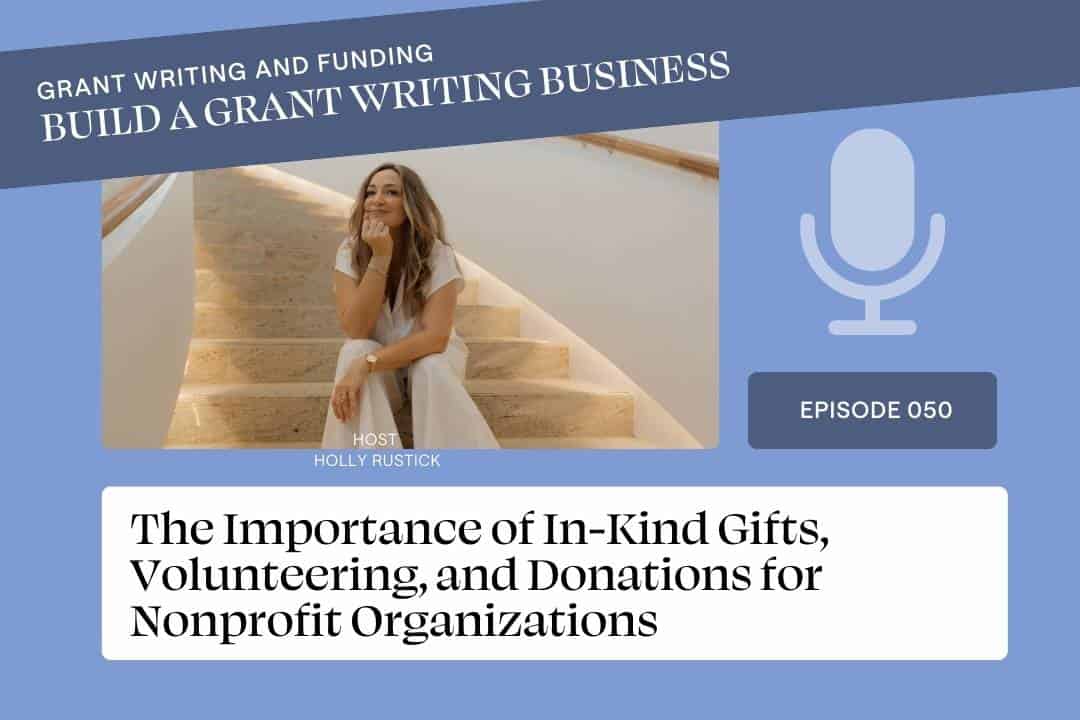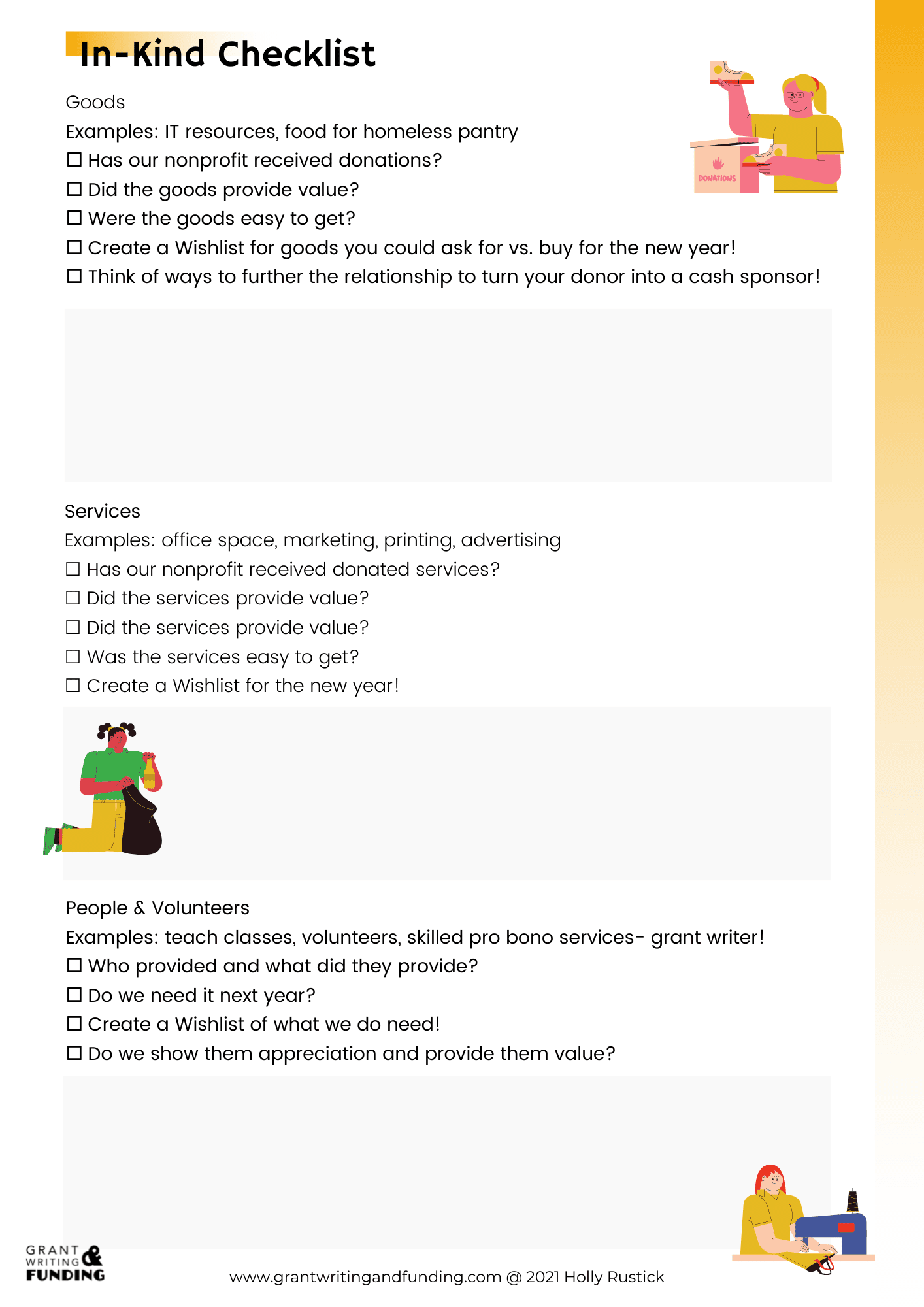The Importance of In-Kind Gifts, Volunteering, and Donations for Nonprofit Organizations

November 7, 2018
his week we dive into why in-kind gifts (such as volunteering, donations, free facility space, etc.) are so important for nonprofit organizations and why you should track these valuable resources.
What are In-Kind Gifts, Donations, & Volunteerism?
In-kind resources are goods, services, and people that offset the costs to run your nonprofit organization.
Think about those people who volunteer at your nonprofit, the copy machine a senator donates, or an office that a business provides at no cost (or discount). These are all things that are considered ‘in-kind’.
What this essential means is that even though you are not increasing direct dollars, you are reducing what you need to spend actual dollars on in your budget.
Tracking In-Kind Goods, Services, & People
The value of in-kind resources should be tracked and is an important part of relationship building for nonprofit organizations and for including in grant applications.
Gifts/Goods
Donations and gifts are great for your nonprofit because you can use them and don’t have to dig into your budget to buy them. However, you can also track the value amount of those gifts.
Ways to find the value of gifts (or goods) at nonprofits
Understanding the value of gifts donated to nonprofits is a bit easier. Basically, if you had to go buy that product what would it cost you? So that copier that the senator donates to your nonprofit might sell at retail for $129. However if it’s an old model (oh, yes, sometimes people like to donate obsolete junk to nonprofits) then that value might only be $59.
But do track this donation amount as in-kind to your nonprofit.
Services & Space Donations
Having donated services and space are important for your nonprofit organization. For example, if your landlord does not charge you rent (or very reduced rent), that amount that they do not charge is considered in-kind. You can track in your budget how much you receive in this donation to show what the real costs are to your nonprofit.
Just think about it. If you have a company that donates office space for your nonprofit in a backroom at their bank, and after two years they need to reclaim that space, you would now need to budget real money to relocate your office. So the value is very real.
Ask for a lease, contract, or something similar that shows the actual amount and then the discounted rate. Once again this is something your sponsor may want for their tax purposes as well.
Other ink-kind services could include an advertising company comping you ad space in a newspaper, on the radio (think Public Service Announcements), etc.
People (Volunteers)
Getting volunteers for your nonprofit can also help you with your budget. For example, if you have someone volunteer 10 hours of their time in a one-month period, your nonprofit should keep a log with that person’s name, date, and time in and out that they volunteered. Additionally, you should also include the value tied to their time.
Ways to find the value of volunteers at nonprofits
- Use a Generic Rate: Utilizing a generic volunteer amount that the Independent Sector publishes every year. This is for general volunteer work. So if you have a volunteer answering phones, passing out swag at an event, or doing a beach clean-up then a generic value amount will make sense.
- Use a Specific Rate: However, if you have a volunteer for a very specific skillset; i.e. grant writing, strategic planning, or social media production, then you can look at your local rates of what those skilled hourly rates are and apply that appropriately. Sometimes you may have a freelance grant writer volunteer to do a pro bono grant for your nonprofit so you can ask them to submit an invoice of what their actually costs are and then include a deduction line to zero out what they are actually charging you. In this way, you have a clear paper trail on what that in-kind amount is. (Wink-wink) Sometimes the consultant will give this to you anyway, because they may be eligible in writing this off in their taxes.
So how do these in-kind goods, services, and people help when writing grants?
Well, sometimes you need matching. And if you are able to use a soft match, then you can include these amounts. However, if you are not tracking the value of donated (in-kind) goods, services, and people then you cannot use them for grant purposes because you have no idea what the amount is or paperwork to prove it. So even if you aren’t writing a grant yet, do start tracking the value amount.
This is vital! When you track the value of volunteerism, gifts, and donations then you know your real costs. You can also send thank you cards and other items that actually show the value, which in turn promotes appreciation and for your sponsors and volunteers to continue giving year after year. And of course you can use this in your grants to show the level of community support that your nonprofit receives!
Checklist of Tracking In-Kind Goods, Services, & People
Below is a checklist to help you reflect on the last fiscal year and to prepare you for how in-kind will help your organization in the new year.
However, sometimes those in-kind gifts are not truly helping your nonprofit organization, don’t be afraid to say NO if you don’t need it!
Grant Tip: You can use in-kind gifts as a matching opportunity in grant writing if the project allows and the in-kind is directly part of the project!!
Example: The classes you provide to your service demographic are held in your in-kind office space!
Click here to download the FREE In-Kind Checklist
Click here to download the FREE In-Kind Checklist
Holly Rustick
Meet the author Holly Rustick
Work with Me
Write Grants, Get Paid.
Freelance Grant Writer Academy
Grant Professional Mentorship
JOIN OUR NEWSLETTER
Holly Rustick is a world-renowned grant writing expert and Amazon bestselling author.
Holly has been coaching grant writers how to run successful 5-6 figure businesses since 2017.
With two decades of grant writing and nonprofit experience, Holly is a popular keynote speaker for events all over the world, podcast host of the Top-Ranked Grant Writing podcast, a former university instructor, and is past president of the Guam Women’s Chamber of Commerce. She is constantly booked out to run trainings to help grant writers grow capacity, increase funding, and advance mission.
Love this post? You'll love these resources.
GET ACCESS NOW
Free Grant Writing Class
Get the proven 7 steps to eliminate anxiety and get Holly’s 20 years of secrets to start writing winning grants.
You will get the grant writing system that has helped Holly secure more than $25 million in grant funding and students earn more than $100,000,000 in funding for nonprofits around the world!
GET ACCESS NOW
Free 5-Step Checklist
OUR SPICY BELIEF IS THAT ALL GRANT WRITERS SHOULD START A BUSINESS, EVEN IF IT’S PART-TIME.
Work from home and have a massive impact on your community. Set up a grant writing business so you can start getting paid to write grants.
